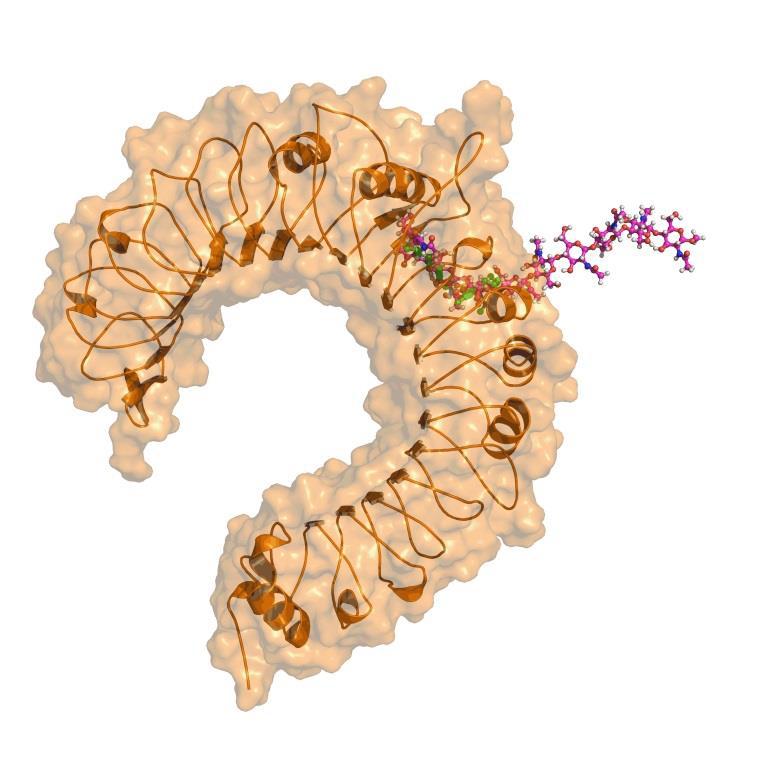Press Releases
18.10.2018
How the immune system senses chitin, a key activator in fungal infections and dust allergies
University of Tübingen researchers identify chitin receptor – a first step towards treatments
Chitin supports the cell wall of fungi such as the molds Aspergillus and the yeast Candida, which can cause dangerous infections in humans. Chitin also forms the exoskeletons of insects and arachnids – including mites – and is therefore an important component of dust mite allergens. Chitin is not found in mammals, which means that the human immune system can identify it as foreign and launch defensive measures against it. Until now researchers had no firm evidence of a direct link between chitin and a specific human immune receptor. An international team of scientists headed by Professor Alexander Weber at Tübingen’s Interfaculty Institute for Cell Biology has now succeeded in identifying a receptor in our innate immune system as a chitin sensor. Understanding the chitin-receptor connection allows researchers to find suitable points for therapeutic intervention in the battle against infections and diseases linked with chitin. The results have been published in the journal EMBO Reports.
Chitin is the second most common natural polysaccharide and is made of flexible chains or surfaces of the same basic building block, which is arranged into tough structures to form fungal cell walls and animal exoskeletons. Whereas larger chitin particles are not immuno-stimulatory, particles in the micrometer range have long been known to activate the immune system. “In previous experiments on immune detection of chitin, micrometer particles were often used. But these were sometimes contaminated and still much larger than a human cell, let alone a single tiny receptor protein,” says Alexander Weber. This meant that it was unclear exactly how the immune response was triggered.
Weber’s team used much smaller chitin molecules of a defined size and composition. The experiments showed that the chitin chains have to be made up of at least six subunits to activate the immune system receptor (Toll-like receptor or TLR2) and set off the immune reaction. “We were surprised that chitin chains composed of five or fewer basic building-blocks did not set off an immune response and may even alleviate it,” Weber says. He added that this result was true not only in humans and mice, “but interestingly also in plants, as our Plant Biology colleagues found.”
Starting points for treatment
Along with fungal infections, dust allergies are an economically significant condition linked to chitin. The real allergen are the feces of the dust mite, which causes respiratory inflammation and even allergic asthma in many people. “It may be that substances like chitin promote an immune reaction to these excrements in a similar way adjuvants work in vaccines, and activate the immune system to respond strongly to a certain antigen,” Weber says. In the case of a fungal infection it is vital that the immune system responds against such a chitin-containing pathogen and defined chitin chains may thus be used as vaccine adjuvants when applied correctly. Dust mites, however are rather harmless to people: The allergic disease is thus fueled by an overreaction of the immune system to the chitin in ordinary household dust. That response needs to be suppressed.When researchers blocked the binding of chitin to the TLR2 receptor, they could prevent inflammation resulting from chitin exposure and the immune system did not go on alert. “For both goals – strengthening the immune response to pathogens as well as potentially preventing an immune reaction to dust mites – we have found an important key in the chitin receptor TLR2,” Weber concludes. However, he adds, there is still a long way to go before targeted treatments can be developed.
Publication:
Katharina Fuchs, Yamel Cardona Gloria, Olaf-Oliver Wolz, Franziska Herster, Lokesh Sharma, Carly A. Dillen, Christoph Täumer, Sabine Dickhöfer, Zsofia Bittner, Truong-Minh Dang, Anurag Singh, Daniel Haischer, Maria A. Schlöffel, Kirsten J. Koymans, Tharmila Sanmuganantham, Milena Krach, Thierry Roger, Didier Le Roy, Nadine A. Schilling, Felix Frauhammer, Lloyd S. Miller, Thorsten Nürnberger, Salomé LeibundGut-Landmann , Andrea A. Gust, Boris Macek , Martin Frank, Cécile Gouttefangeas, Charles S. Dela Cruz, Dominik Hartl, Alexander N.R. Weber: The fungal ligand chitin directly binds TLR2 and triggers inflammation dependent on oligomer size.
EMBO Reports, 10.15252/embr.201846065, embor.embopress.org/cgi/doi/10.15252/embr.201846065.
Contact:
Professor Dr. Alexander Weber
University of Tübingen
Interfaculty Institute for Cell Biology
Phone +49 7071 29-87623
alexander.weber[at]uni-tuebingen.de
Contact for press:
Eberhard Karls Universität Tübingen
Public Relations Department
Dr. Karl Guido Rijkhoek
Director
Janna Eberhardt
Research Reporter
Phone +49 7071 29-76753
Fax +49 7071 29-5566
janna.eberhardt@uni-tuebingen.de
www.uni-tuebingen.de/en/university/news-and-publications.html

